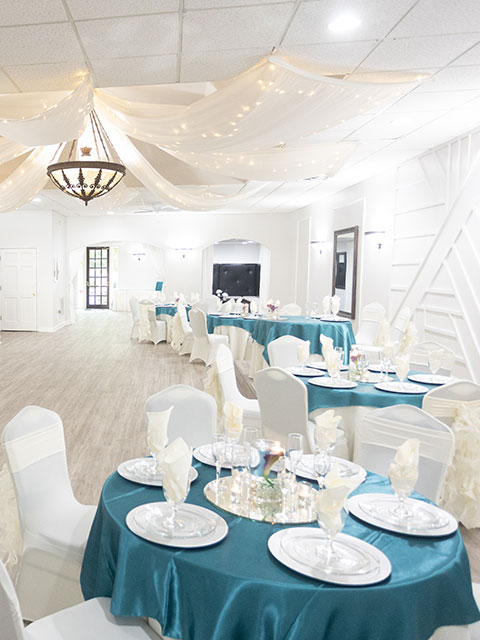Planning your wedding means accommodating numerous parts, pieces, places, and people- and the larger your wedding, the more of these elements there are. But of the many moving parts, perhaps putting together your seating chart for the reception might be one of the most overwhelming. After all, who do you place where and with whom – especially if the goal is to avoid unnecessary drama.
In addition, there are always those last-minute RSVPs to be factored in that can leave gaps in tables or cause you to need extra seating- Hmm. What on earth are you to do? Thankfully, you can be assured you are not the first couple to face the seating chart dilemma- so don’t panic. The Gala Event team is here to help onsite and provide you with some great tips to help plan your table scenarios easier.
Tips for Crafting Your Wedding Reception Seating Chart
You can do many things to help simplify creating the wedding reception seating chart for your big day, so don’t let this part of wedding planning be your nemesis. Keep these pro tips in mind.
Tables
Before you begin the chart, know what shape the table will be. Typically, you will need to choose from either round, square, rectangle, or oval. Each one has its pros and cons. For instance, round tables are traditional and afford plenty of leg-room but not necessarily plenty of elbow-room; rectangles make for more seating and easy conversation; oval or square tables are excellent and can make a statement, but you often lose seating space.
Table Types
This isn’t about the shape of the table, but the groupings needing to be considered. The most common ones are:
- A sweetheart table for the couple
- If things are tense between family members, the parents, grandparents, and siblings may need to have multiple tables in the same area. Or, another option is to have two different shapes of tables – for example, round tables for the main seating area and then rectangles on the edges- then you can place those guests you fear might cause issues on opposite sides of the room at the long tables.
- Wedding party table(s) – if possible, be sure to include any wedding party members’ significant others here, too.
After these key tables, you may need a table or two for children/teens who may not be seated with the parents. Also, you should not have a table for all the single people!
Groupings
The simplest rule of thumb is to categorize your seating chart by groups. Place work friends together, extended family together, school friends at their tables, and so on.
Ask for Family Input
If you invite your parents’ guests or perhaps have family members you are concerned might not do well seated next to each other, don’t be afraid to ask for help. Talk to your parents or another family member to get their input.
The Venue
Be sure you know the venue’s space and seating capability. Not just so you know how many people can be there, but so you can place people where they will be comfortable. For instance, grandma may not want to be near the live band and dance floor, and those with limited mobility may prefer to be near the edges of the room.
Tables Only
Rather than assigning seats and tables, tell people what table to go to and let them decide who they wish to sit next to.
Do Your Homework
Consider using a computer chart or spreadsheet to plan out your seating chart. Like any task, the more you know about it and how the result should be, the better. And, if you still need ideas, check out what others have done and be sure to talk to your Gala coordinator.
Designing your wedding reception seating chart doesn’t have to be a problematic, overwhelming task. Yes, it might take some time, but it can be accomplished with perseverance and implementing these tips. Don’t let your guests put stress on your wedding! Make the day fun and exactly what you want- and let the Gala team help you after all-you deserve it!


